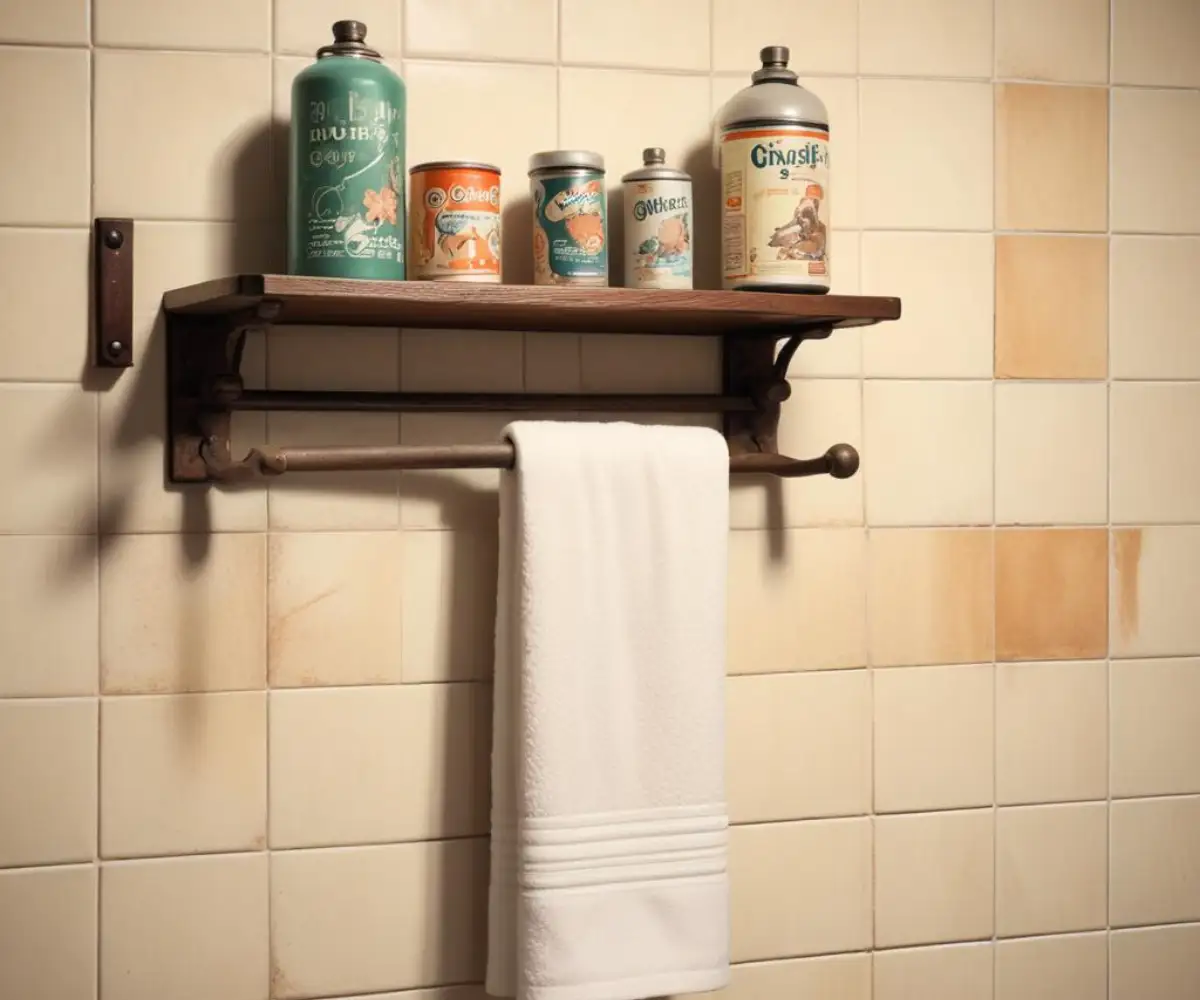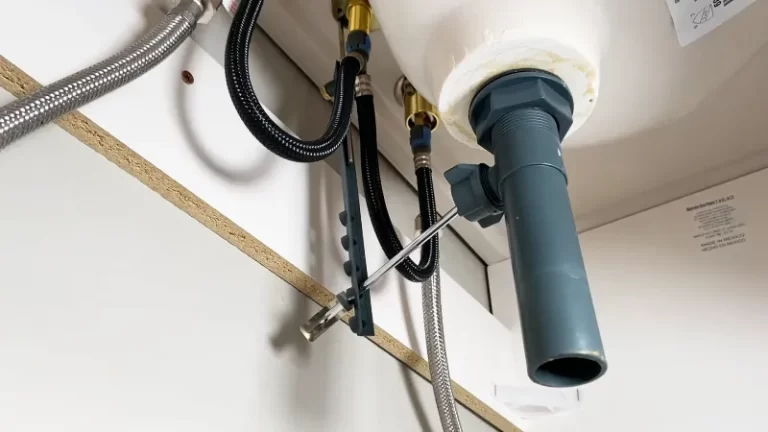Use Expanding Foam to Fix a Loose Towel Rack: DIY Guide
It’s a moment every homeowner dreads. You reach for a towel, and with a sickening crunch, the entire towel rack rips out of the wall, leaving behind a crater of crumbled drywall and failed plastic anchors. It’s a frustrating, common problem that makes your bathroom look instantly disheveled.
Traditionally, fixing this meant either moving the rack and leaving unsightly holes, or cutting open the wall to install wood blocking—a dusty, time-consuming job. But what if there was a stronger, faster, and more clever solution? There is, and it comes in a can: expanding foam.
You'll Learn About
Why Your Towel Rack Failed in the First Place
Before we dive into the fix, it’s crucial to understand why this happens. Most towel racks are installed directly into hollow drywall, a material notoriously bad at holding screws under constant pulling force. The little plastic anchors provided by manufacturers are often simply not up to the task.
Over time, the weight of wet towels, accidental leaning, or a child using it as a gymnastics bar puts stress on these weak points. The anchor slowly loosens, the drywall around it disintegrates, and eventually, the entire fixture fails. This isn’t just a cosmetic issue; it’s a structural failure of the mounting point.
The Usual Suspects: Inadequate Anchors
The standard plastic anchors included with most bathroom hardware are designed for light-duty applications. They work by expanding slightly behind the drywall, but they offer very little surface area to distribute the load. A few pounds of consistent pressure is often all it takes to make them pull straight out.
More robust solutions like toggle bolts are better, but they require a large hole and can still fail if the surrounding drywall is already damaged or weak. The core issue remains: the drywall itself is the weak link in the chain.
The Problem with Hollow Walls
Drywall is essentially gypsum plaster pressed between two sheets of thick paper. It’s great for creating smooth walls but has very little shear strength. Without hitting a solid wood stud behind the wall, you are relying entirely on the fragile gypsum core to hold your fixture.
This is where the expanding foam method shines. Instead of trying to grip the flimsy drywall, you create a new, solid anchor point inside the hollow wall cavity itself. This provides a dense, stable base for your screws to bite into, creating a repair that is often stronger than the original installation.
The Expanding Foam Fix: A DIY Game-Changer
Using expanding foam to fix a loose towel rack is an ingenious solution that turns a hollow cavity into a solid block. The foam expands to fill the void behind the damaged drywall, cures into a rigid, lightweight material, and creates a brand-new substrate that you can drill into. It’s a permanent fix that requires no major demolition or complicated patching.
This method is perfect for homeowners who want a durable, reliable repair without the mess and expense of cutting into their walls. Ready to get started? First, let’s gather the necessary tools and materials.

Tool and Material Checklist
Having everything ready before you start is key to a smooth and successful repair. Here is a comprehensive list of what you will need for this project.
| Item | Purpose | Important Notes |
|---|---|---|
| Minimally Expanding Foam | The core repair material. | Crucial: Must be labeled “Low Expansion” or for “Windows & Doors.” Do NOT use high-expansion “Big Gap Filler.” |
| Drill with Bits | To drill new pilot holes into the cured foam. | Have various bit sizes handy. |
| Utility Knife | To trim the excess cured foam. | A sharp blade is essential for a clean cut. |
| Screwdriver | To remove and re-install the towel rack brackets. | Match the type (Phillips or flathead) to your screws. |
| Drop Cloth & Painter’s Tape | To protect your floors and walls from the foam. | Expanding foam is very sticky and hard to remove once cured. |
| Disposable Gloves & Safety Glasses | For personal protection during foam application. | Safety first! |
| Acetone or Nail Polish Remover | For immediate cleanup of any uncured foam spills. | Have this on hand before you start spraying. Once it cures, it’s nearly impossible to remove. |
Step-by-Step Guide: Your Towel Rack Will Never Fall Again
With your tools gathered, it’s time to execute the repair. Follow these steps carefully for a professional-quality result that will stand the test of time.
Step 1: Preparation is Everything
Start by completely removing the towel rack and its mounting brackets from the wall. Pull out any old, broken plastic anchors and remove any loose pieces of drywall or paper from around the edge of the hole. The goal is to have a clean, stable opening.
Use a vacuum with a hose attachment to suck any remaining dust and debris from inside the wall cavity. A clean surface will ensure the foam adheres properly. Lay down your drop cloth to protect the floor below the repair area.
Step 2: Injecting the Foam (The Critical Step)
Put on your gloves and safety glasses. Shake the can of minimally expanding foam vigorously for about 60 seconds, as recommended by the manufacturer. Attach the applicator straw securely to the nozzle.
Insert the tip of the straw about an inch into the hole. The key here is restraint. Do not fill the entire hole! You only need to inject a small amount of foam—enough to fill about 30-40% of the void you imagine behind the hole. The foam will expand significantly, and overfilling is the biggest mistake you can make, as it can cause the drywall to bulge outwards.
Step 3: Let it Cure Completely
Once you’ve injected the foam, leave it completely alone. Do not touch it or poke it. The foam needs to cure fully, which can take anywhere from 4 to 24 hours depending on the brand, temperature, and humidity. Check the instructions on the can for the specific curing time.
During this time, the foam will expand and harden into a rigid structure. Patience is your best friend here; attempting to move on before it’s fully cured will compromise the strength of your repair.
Step 4: Trim the Excess Foam
After the foam has completely hardened, you will likely have a “mushroom” of excess foam that has expanded out of the hole. Take your sharp utility knife and carefully slice this excess foam off so it is perfectly flush with the wall surface.
The goal is a smooth, flat surface. If the cured foam is slightly recessed into the wall, that’s okay. If it’s still bulging out, carefully shave more away until it is level.
Step 5: Re-install the Towel Rack
Hold the towel rack bracket up to its original position over the now-solid foam-filled hole. Use a pen or pencil to mark where the screw holes need to go. Using your drill, create a small pilot hole for each screw directly into the cured foam.
Now, simply drive the original screws through the bracket and into your new, solid backing. You will feel a satisfying, firm grip as the screws bite into the dense foam. The connection will be incredibly strong and secure. Re-attach the towel rack and give it a confident tug—it’s not going anywhere!
Choosing the Right Foam: A Crucial Decision
The success of this entire project hinges on using the correct type of foam. Walking into a hardware store, you’ll see several options, and picking the wrong one can turn this simple fix into a disaster.
High-Expansion vs. Low-Expansion Foam
High-expansion foam, often sold as “Big Gap Filler,” is designed for filling large voids in construction. It expands aggressively and exerts significant pressure as it cures. If you use this inside a drywall cavity, it will almost certainly push the drywall outwards, creating a large, ugly bulge that is very difficult to fix. Avoid this product at all costs for this repair.
Low-expansion foam is the hero of this story. Marketed for sealing around windows and doors, it expands much more gently and controllably. It’s designed specifically for use in spaces where you don’t want to warp or bow the surrounding materials, making it the perfect choice for creating a solid anchor behind your fragile drywall.
Potential Pitfalls and How to Avoid Them
While this method is highly effective, there are a few things to watch out for to ensure a perfect result. Being aware of these potential issues ahead of time can save you a lot of frustration.
The Dreaded Drywall Bulge
We can’t say it enough: use low-expansion foam and use it sparingly. The number one mistake is overfilling the hole. It’s always better to inject too little foam and have to add a bit more than to inject too much and create a bulge in your wall. Remember, the foam’s job is just to create a solid plug behind the drywall, not to fill the entire wall cavity.
Messy Application and Cleanup
Expanding foam is incredibly sticky before it cures. It will get on your hands, tools, and floor if you’re not careful. Always wear gloves. If you do get some on a surface where it doesn’t belong, wipe it up immediately with a cloth and a solvent like acetone. Handling sticky materials is a common challenge in home repairs, whether you’re trying to remove a stuck cap from silicone caulk or cleaning up foam over-spray.
When This Method Isn’t Suitable
This fix is ideal for holes up to a few inches in diameter where the surrounding drywall is relatively intact. If the damage is extensive—for example, a huge section of drywall has been torn away—you may need a more traditional patch. For extensive cosmetic issues, it might be better to learn how to fix dents in engineered wood floors or other surfaces with a full repair rather than a spot fix. However, for a standard towel rack failure, the foam method is perfect.
Beyond the Towel Rack: Other Smart Uses
Once you master this technique, you’ll find other uses for it around your home. This method is fantastic for securing loose toilet paper holders, curtain rod brackets, or any other wall-mounted fixture that has pulled away from hollow drywall.
It’s a versatile solution for adding strength to any hollow wall mounting point. The principle is the same: create a solid, drillable anchor where there was once only empty space. It’s similar to how you might use specific adhesives for targeted projects, like when you need to glue trim to a bathtub to seal a persistent gap.
A Strong, Lasting, and Easy Solution
Fixing a towel rack that’s been ripped from the wall doesn’t have to be a major construction project. With a can of the right expanding foam and a little bit of patience, you can create a repair that is far superior to the original installation.
This clever DIY hack saves you time, money, and the mess of traditional drywall repair. You can tackle this project with confidence and enjoy the peace of mind that comes with a rock-solid, permanently fixed towel rack.

